It’s important for any medical or dental practice to get proper consent from a patient who is a minor before they can perform treatments. There are different types of consent, and some will require the use of a Dental (Patient) Consent Form.
Free Dental Consent Forms
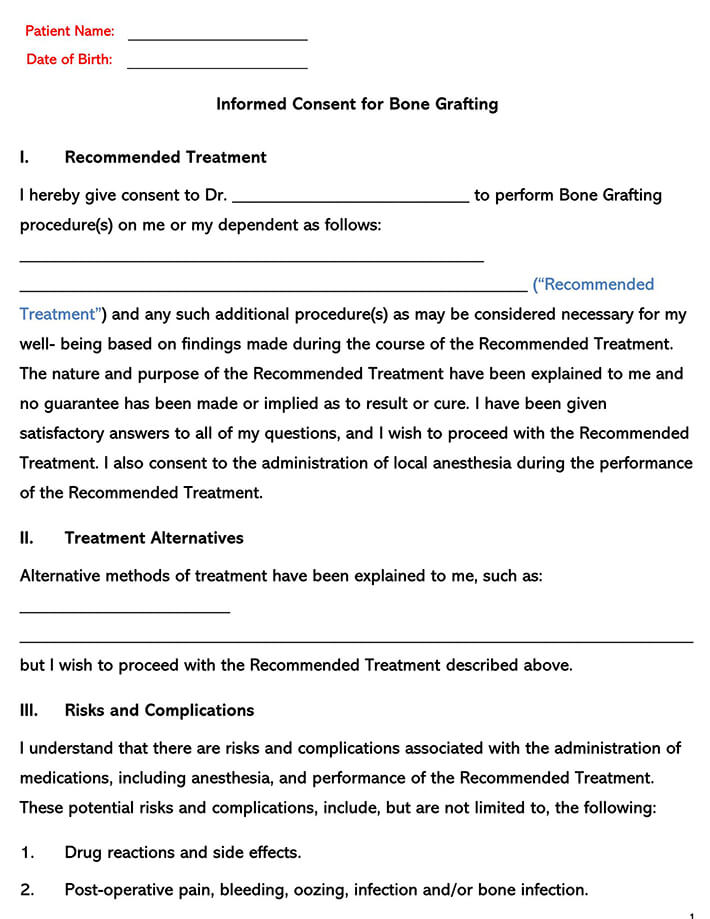
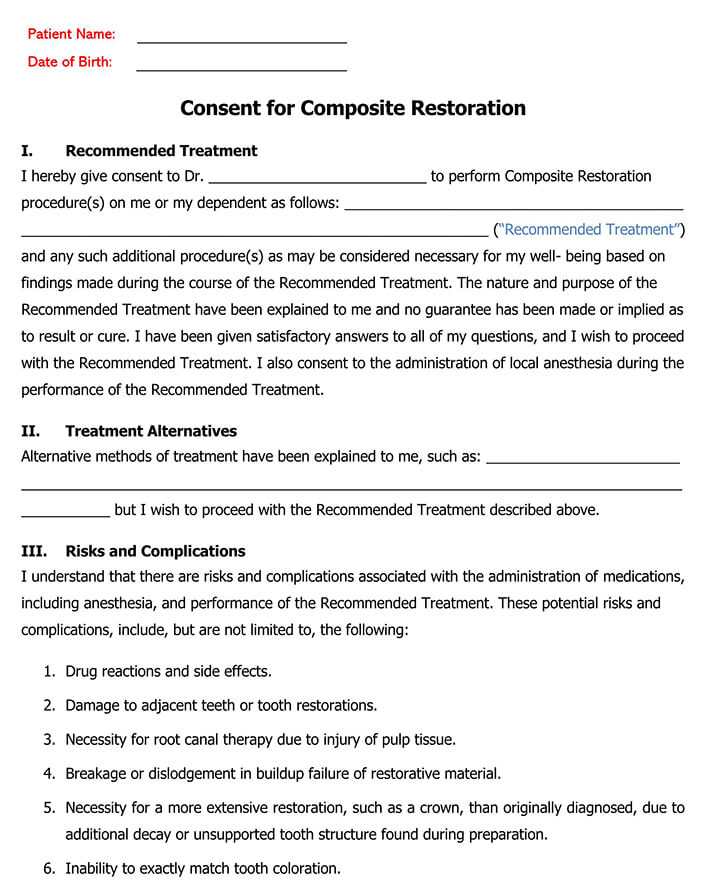
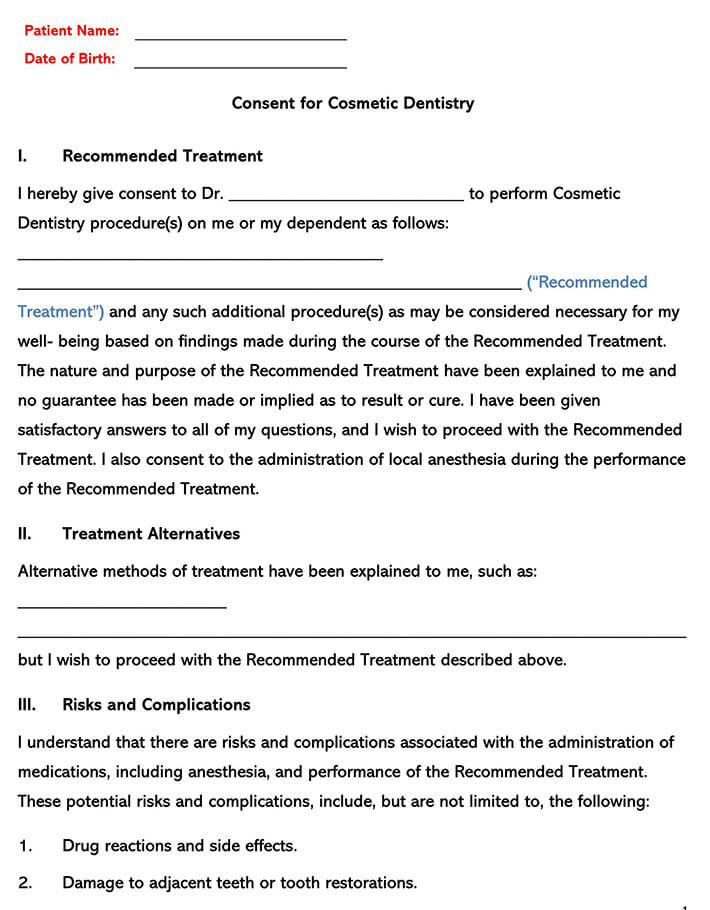
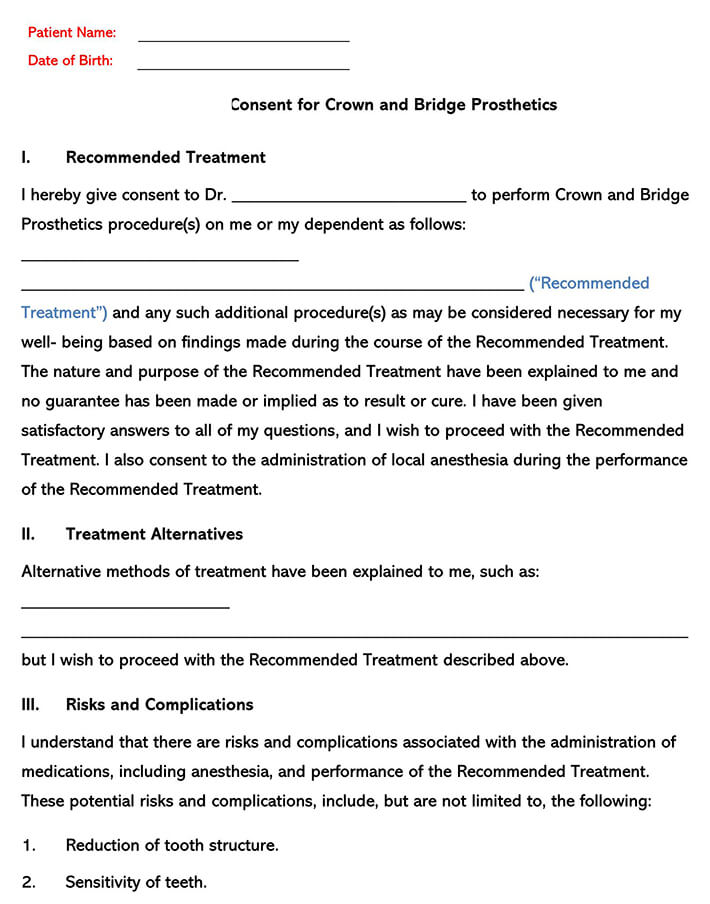
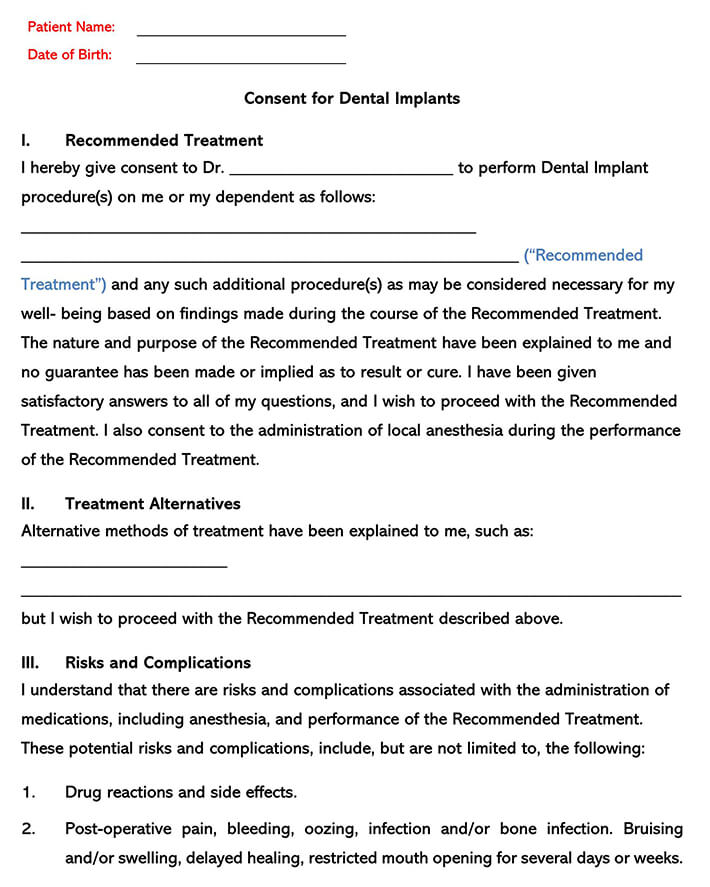
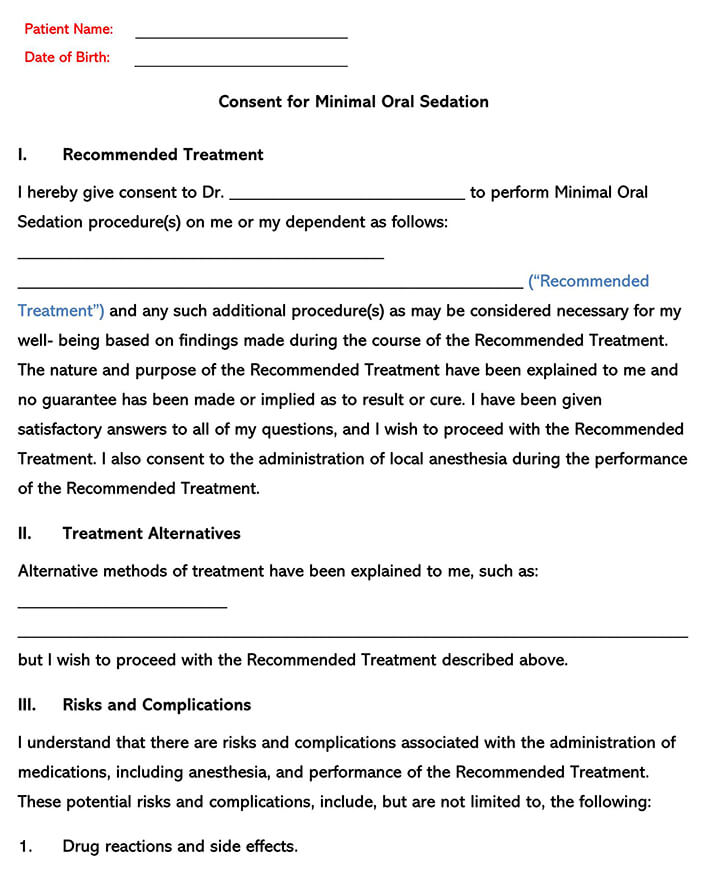
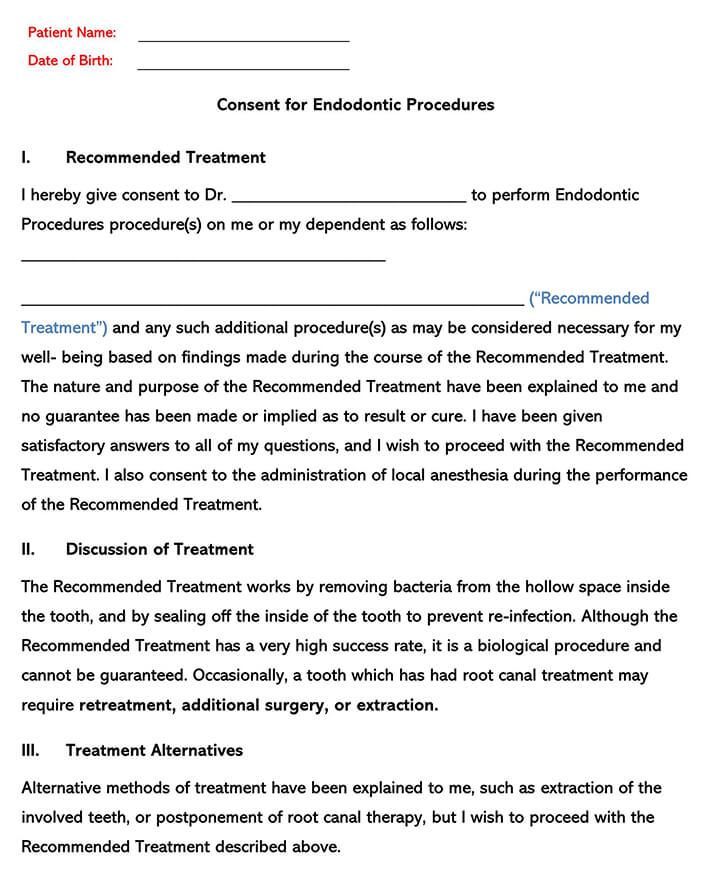
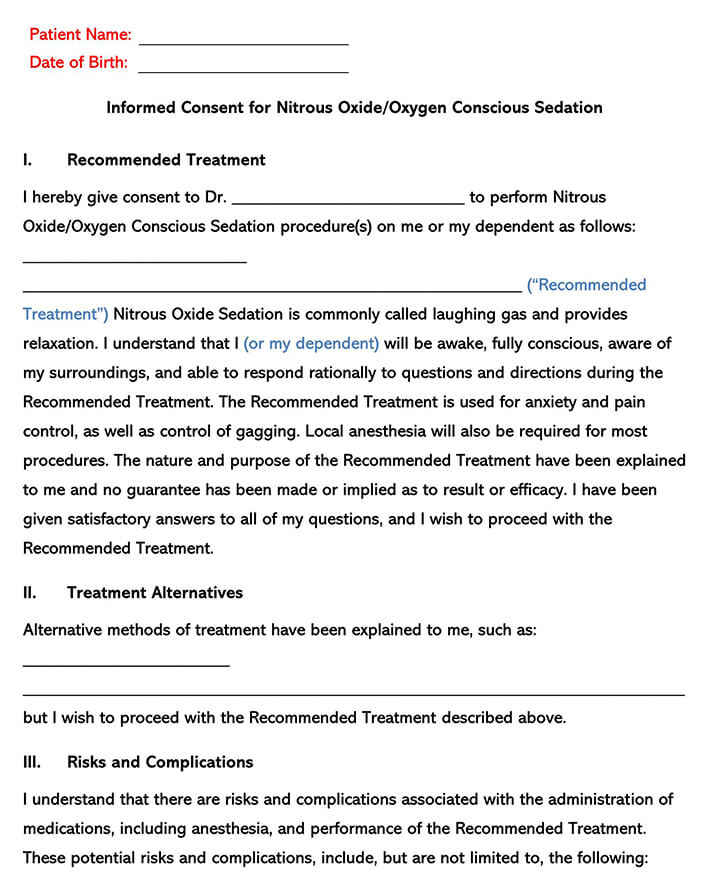
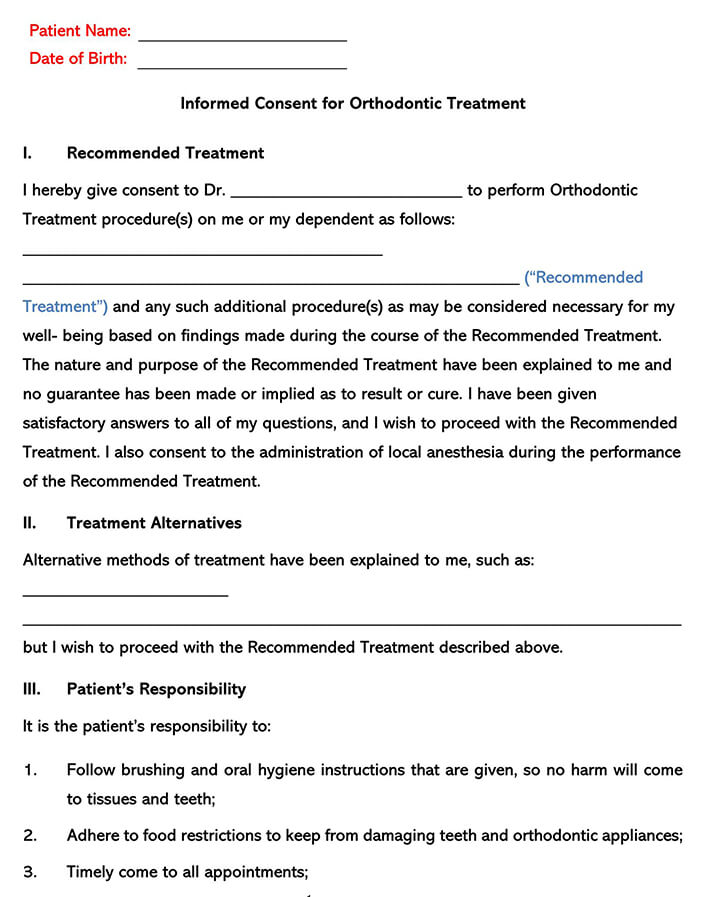
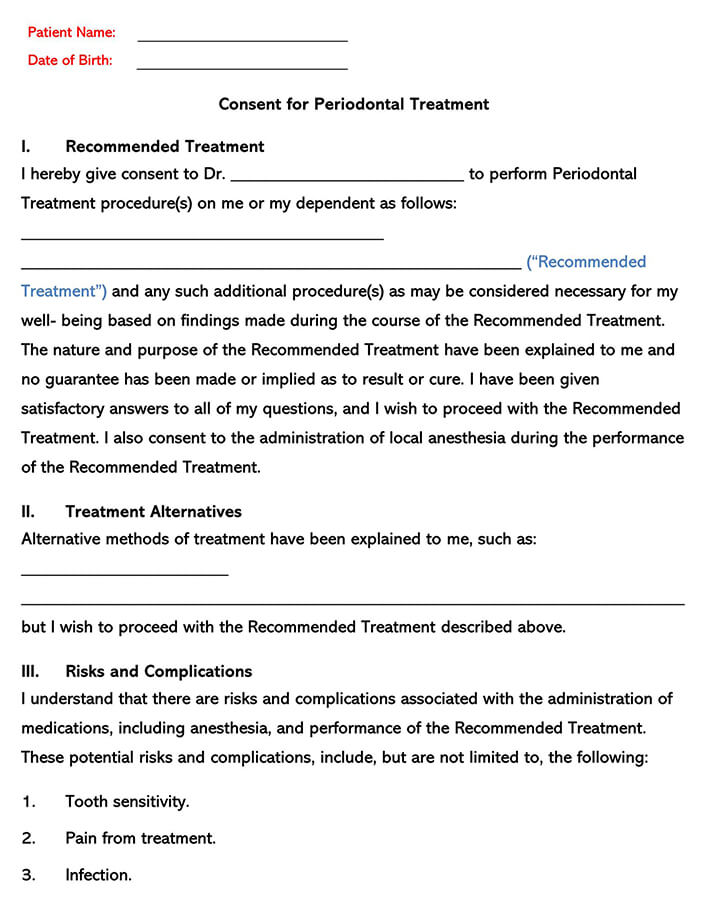
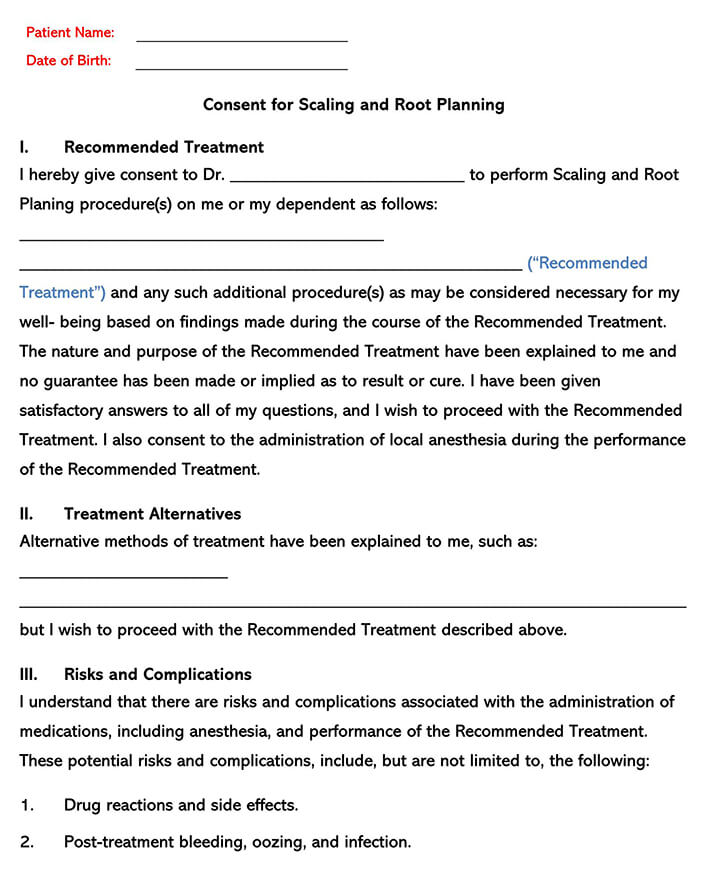
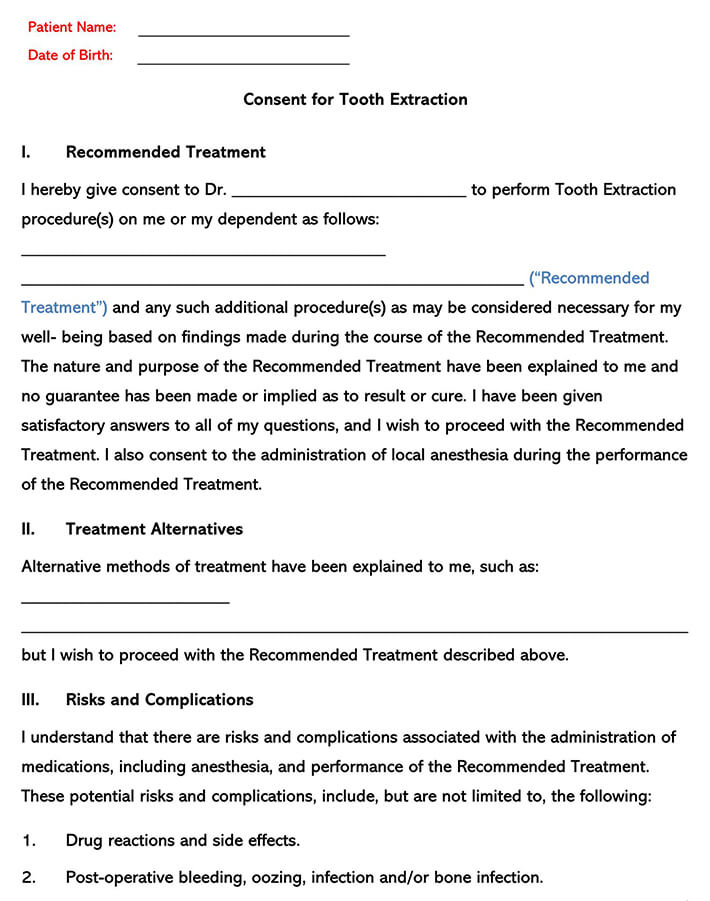
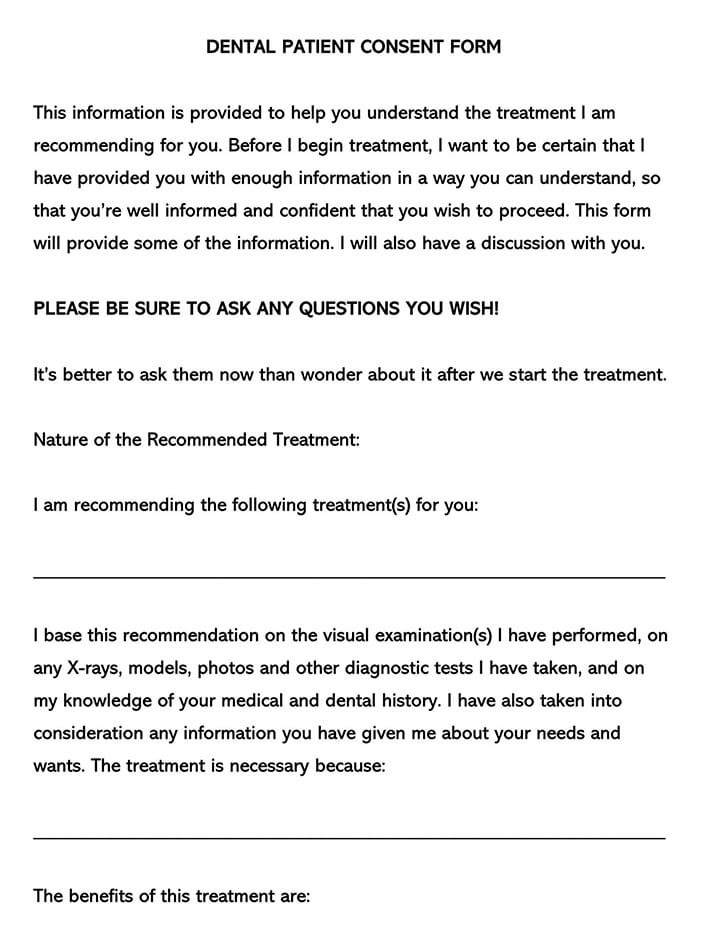
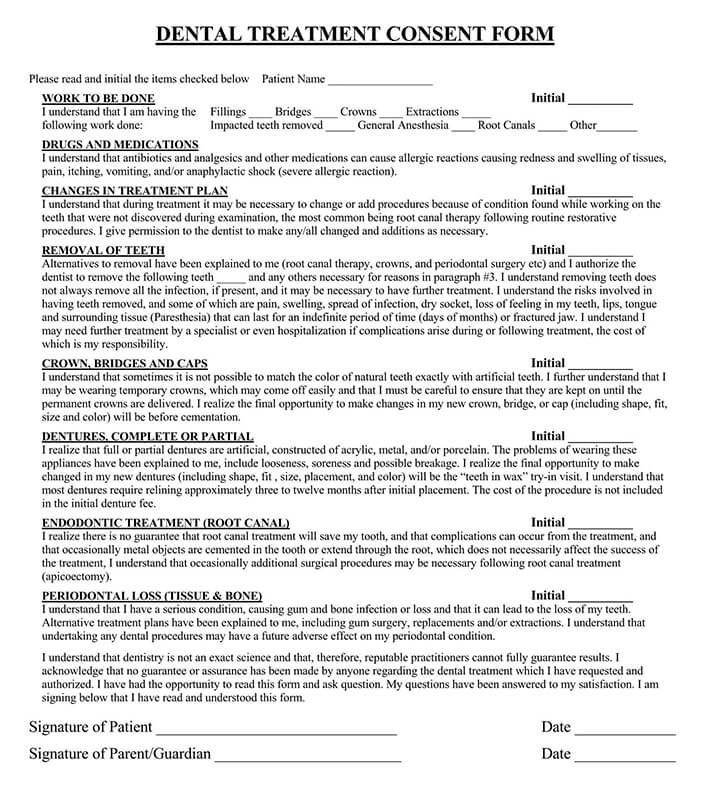
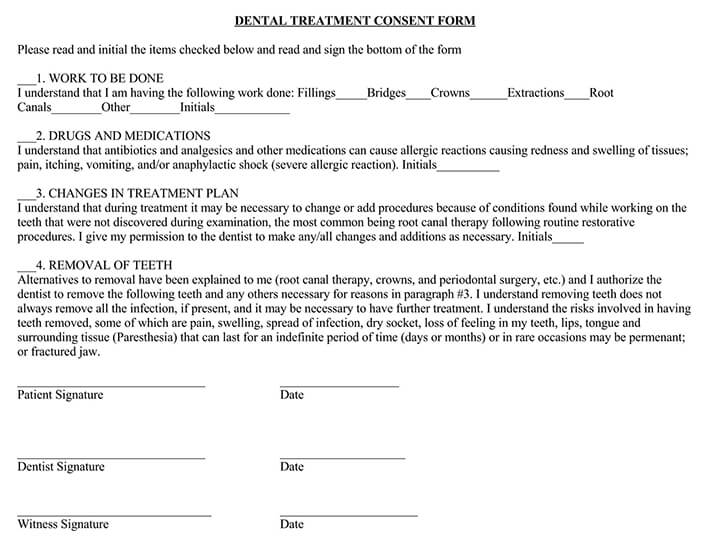
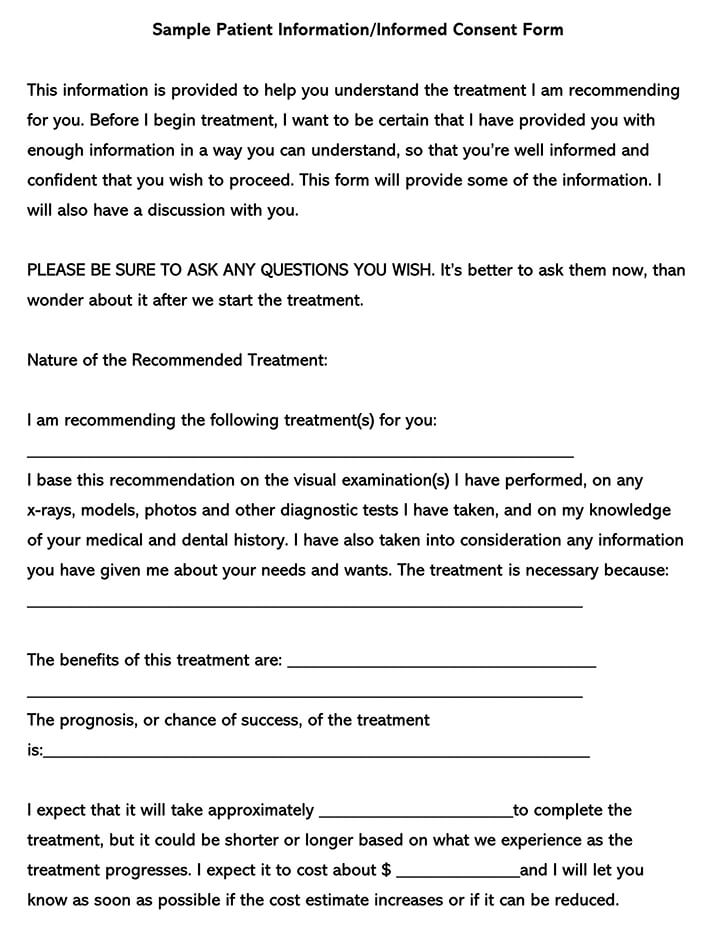
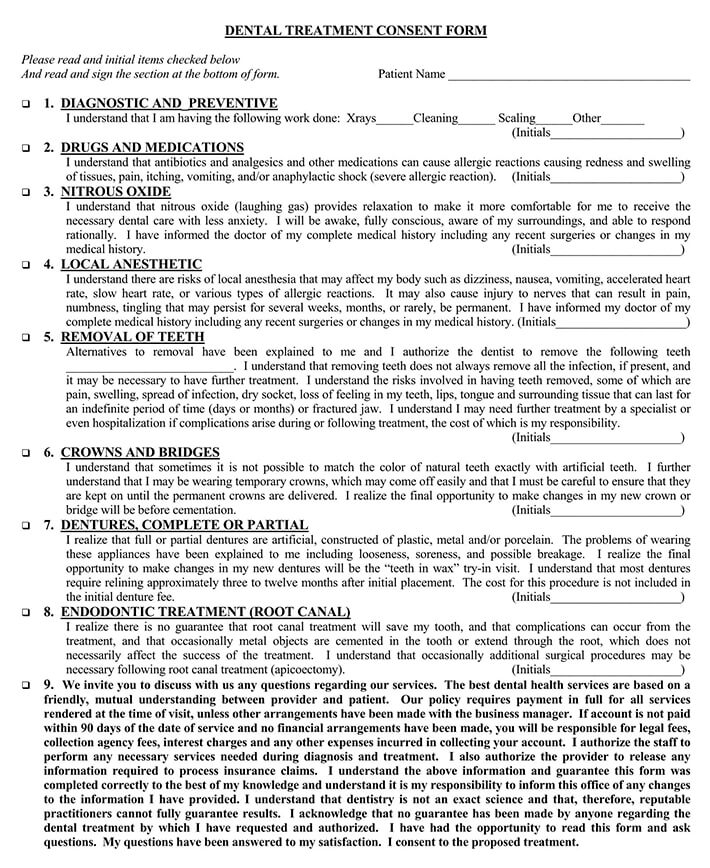
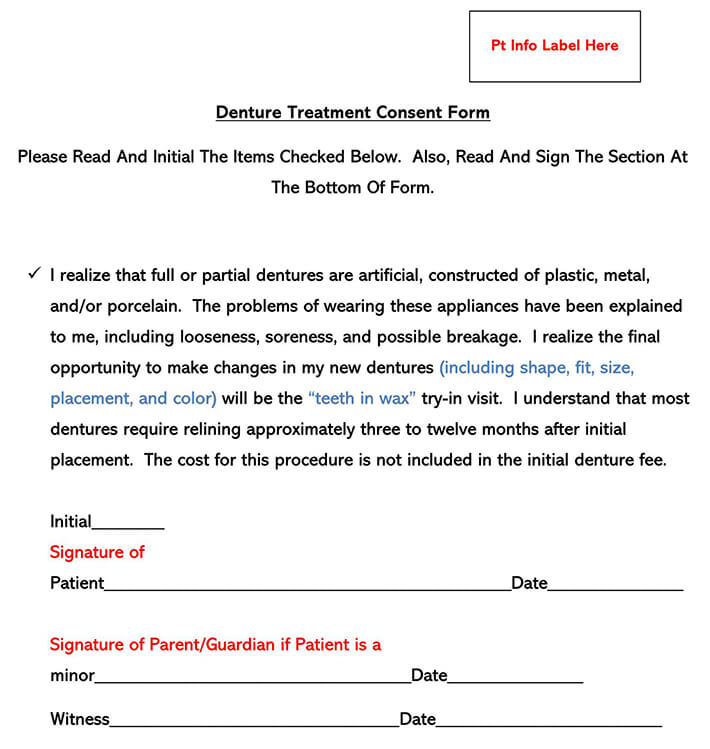
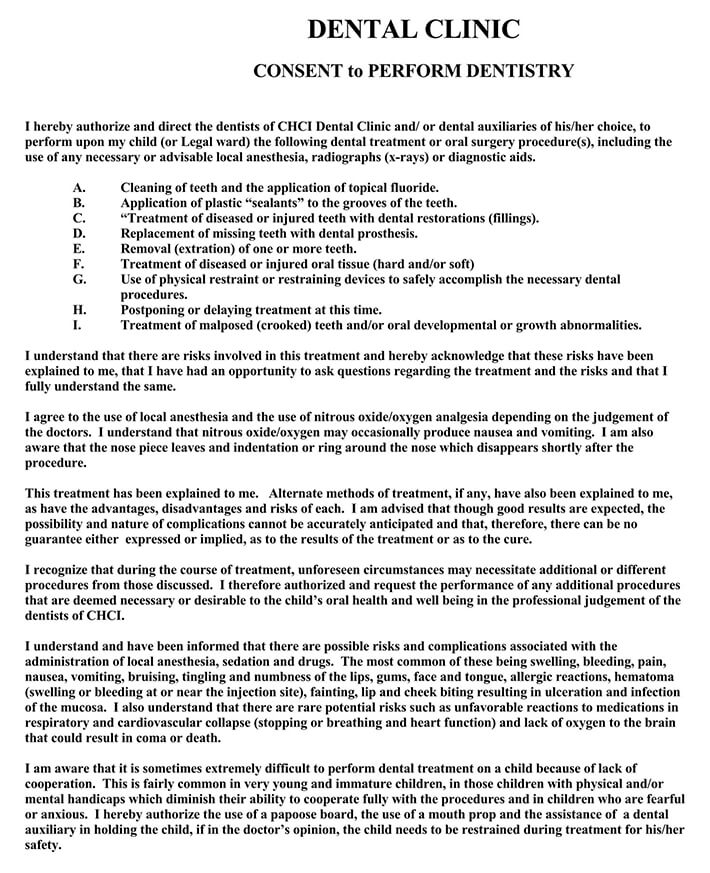
What is Consent?
Consent is an agreement by the patient, or a parent or guardian, that certain treatments can be performed. It needs to be:
- Voluntary: the person giving consent, whether the patient or the parent/guardian, has not been put under pressure.
- Informed: the patient needs to be given all details relating to the treatment being done, such as benefits, risks, and alternatives.
- Capacity: the patient needs to be capable of understanding the given information in order to make a well-informed decision.
How to Obtain Consent
The dentist and any team members have a responsibility to make sure a patient’s consent has been given properly before any treatment can be started. There are two types of consent; implied and express.
Implied consent
Implied consent, such as with dental examinations, occurs when a patient has been fully informed regarding the planned treatment for that session, and they physically and voluntarily sit in the dental chair ready for treatment.
Express consent
Express consent is for treatments outside of an examination and is needed by the patient either orally or in writing. Written consent is needed when treatment requires a patient to be sedated or given a general anesthetic for the proposed treatment.
What is a Dental Consent Form?
This is a written form that gives authorization, by the patient, to allow their dentist to proceed with treatment. It requires the signature of the patient, and it should be a comprehensive form that covers risks, benefits, alternatives, and medical issues. The purpose of the form is to make sure the patient, or parent/guardian, has been given details about the procedure, and it can protect the dentist against liability should anything go wrong when the procedure is being done.
What Should be Included
There are specific things that need to be on the form:
- Explanations of any current dental problems
- A list of any proposed dental treatments
- The reasoning behind the chosen treatments and any outcomes that are expected
- Any risks that may be associated with the proposed treatment
- Any alternative ways a problem may be treated
The main thing is that the patient understands any risks involved before they consent to treatment. You should go over the form in full and answer any questions the patient may have clearly. For patients under the age of 18, a parent or guardian will need to sign the form.
Legal Implications
It is a dentist’s legal duty to make sure their patients are aware of all aspects of a proposed treatment, including any risks and alternatives. Performing a treatment without getting consent can have legal consequences should something go wrong. Consent not only protects the patient, but it also protects the dentists as well.
Consent for Minors
When it comes to treating a minor, there seems to be a lot of opinions regarding consent. 18 is the age of majority in the United States, so overall, a patient under 18 is considered a minor and would need a parent or guardian’s consent on some procedures.
There is a general rule that any patient under 12 requires consent from the parent or guardian. Patients who are 16 and over have been deemed capable of giving consent for treatments, especially if its ongoing treatments that a parent or guardian has consented to before. In some cases, consent needs to be given from both the patient and the parent/guardian.
Frequently Asked Questions
There are three types of informed consent in dentistry; implied, verbal, and written.
Implied: this is when a patient cooperates passively with treatment without formal consent or a discussion. It’s important in these cases to use clear good communication, giving the patient enough details so that they clearly understand what is being done. An example would be a general dental examination. The patient sits in the chair and opens their mouths, allowing the dentist to examine their teeth.
Verbal: with verbal consent, a patient will verbally agree to and give consent to a procedure. Not forms need to be signed, and this is usually sufficient with routine treatments, such as having your teeth cleaned.
Written: written consent is when the patient signs a form agreeing to have a treatment done. This is needed for more extensive treatments, such as root canal, invasive procedures, or procedures that require anesthesia/sedation.
In most states in America, the age of consent is 18. If a patient being treated is under the age of 18, consent from a parent or guardian is needed.
This depends on the severity of the issue. For example, id it would be detrimental to the minor, should treatment be delayed. If a treatment can wait without harming the patient, then you should wait to gain consent. In cases where it is an emergency, be sure all efforts have been made to contact the legal guardian of the minor, and document this in the patient’s record.
For simple and routine treatments, if a minor comes in without a parent, but the treatment has already been discussed and agreed upon by the guardian, a dentist can perform that treatment.
This is down to how much knowledge and information the patient has before giving consent. It can vary depending on treatment, and it’s complexity.




